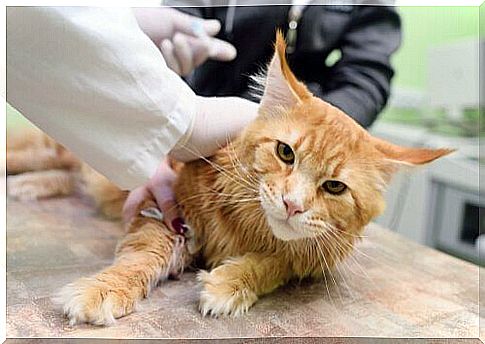Cat-borne Diseases

Cats have been with humans for thousands of years. Today, they have become one of the most popular pets since the last century. But unfortunately cat-borne illnesses can sometimes be quite serious.
It is considered that only 35% of the world’s population has ever had a cat in their lifetime, meaning that it is likely that they have already had a disease that is linked to these animals. Of course, we’re not saying this is a rule, but today we’ll know more about some of these diseases.
Diseases transmitted by cats
Cats, despite being great life companions, carry dangerous diseases that affect our health. Many of them are transmitted through direct means, such as touching them or being scratched by them. But the truth is that there are different ways of transmitting these diseases.
Contact with your urine and feces is among the forms of transmission. These wastes house various bacteria and parasites that bring serious consequences to the human body. Other forms of transmission of diseases transmitted by cats include the airways.
The latter is fundamental, because that’s how big pandemics, like bird flu and even H1N1, circulate from person to person. Next, we’ll talk a little about three different diseases that cats transmit.
Lyme disease
It is a bacterial disease that is usually transmitted by ticks, with their bites. Cats can transmit it by accident if they become infected after a tick bite. The ideal when adopting a cat is to check whether or not it has parasites on the skin and perform the respective tests.

Lyme disease is caused by the bacteria Borrelia burgdorferi . It is worth noting that not all ticks transmit this disease, only if they have previously bitten an infected animal. The disease has three stages or degrees of infection :
- Early or localized : the disease has not yet spread through the body.
- Early spread: the disease spreads throughout the body.
- Late spread : the disease is found throughout the body.
Among the symptoms that this disease presents are: headaches, joints and muscles, fevers, nausea and general malaise. Once the disease develops, a very characteristic red ring appears in the bite area.
If not treated in time, the affected person is at risk of death. The bacteria can affect a person’s heart and brain and thus cause cardiac arrest and even cognitive and speech difficulties.
toxoplasmosis
Of the diseases transmitted by cats, toxoplasmosis is recurrent and one of the most serious. It is caused by the parasite Toxoplasma gondii , which causes more serious damage in pregnant women. It is transmitted through direct contact with the feces of young cats.

For a healthy person it usually doesn’t mean a big deal, but for pregnant women and HIV patients it can have deadly consequences. Pregnant women can suffer miscarriages and patients with HIV can suffer from brain infections.
The symptoms of this illness can be confused with those of the flu. Fever, malaise and weakness are usually the most common. The best way to avoid a bad diagnosis is to visit your doctor, who will recommend the best course of action.
Anger
Another disease transmitted by cats is rabies, produced by the rabies virus . It is a common disease among domestic animals and is transmitted through contact with infected saliva. Rabies has a high degree of lethality, but fortunately there are few cases that occur globally.

Symptoms in cats and humans include:
- Aggressiveness
- hyperactivity
- Fever
- Paralysis
- difficulty breathing
The disease has a degree of action of a few days before causing the death of those affected. To avoid this, a vaccine has been developed with a high degree of effectiveness for both humans and cats. If you suspect one of these cases, it is vital to consult your doctor and veterinarian for the best course of action.









